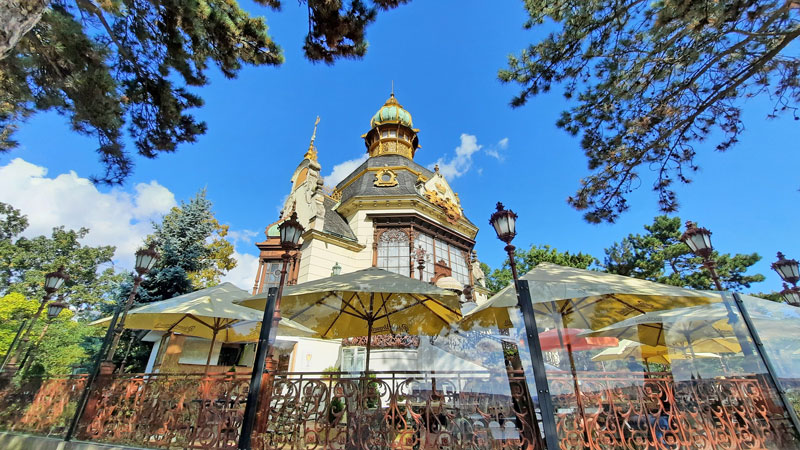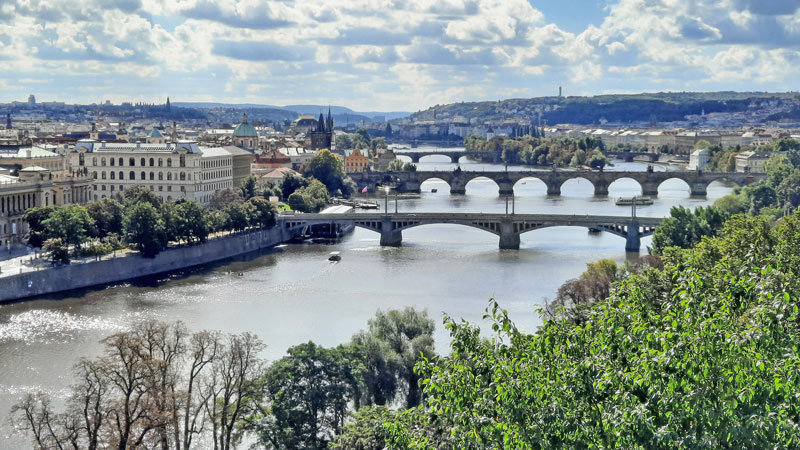Hanavsky Pavilon
No it’s not a spelling mistake. In Czech we call them a pavilon but tourist guides will often call it a pavilion. In any case the Hanavsky Pavilon has both a practical purpose of being one of the few restaurants in the area and also it’s a building of architectural importance.

If you do my Prague Architecture Walking Tour I’ll tell you about places that you might like to visit for tourism but that are also architecturally historic.
Why Visit Hanavsky Pavilon?
The primary reason for a tourist to visit the Hanavsky Pavilon is that it is one of the scenic spots of the city and if you’ve climbed up the hill to Letna Park then you may be wanting a break. Of secondary importance is that it’s a nice restaurant serving a blend of Czech/International cuisine both inside and out on the scenic terrace (they do wild boar goulash and venison goulash which you won’t find in many places). It’s also pet-friendly for dog-walkers in the park. Lost on most visitors coming here is the neo-Baroque style of the building and that it hides a secret.
The 1891 Exhibition
In 1891 there was an exposition to celebrate the centenary of the original Prague Industrial Exposition of 1791 which had been held at the Klementinum. The 1891 version was called the Jubilee Provincial Exhibition and was located at the present-day Holesovice Exhibition Grounds. This was to be an exhibition of Czech industry and creativity hence many Czech companies built structures/pavilions to promote their work. At least a dozen major structures were built and several of them were using a fairly new building material, cast-iron. One of those companies was the Komarov Ironworks, owned by Prince William Hanavsky. They built their cast-iron pavilion to promote their business and they chose the neo-Baroque style (to be specific, neo Dutch Baroque) in an attempt to show that a modern building material could be combined with a classical look popular at the end of the century.
The Relocation of the Hanavsky Pavilon to it’s Scenic Spot

At the end of the 1891 exposition all of the cast-iron structures were gradually dismantled and some were relocated to other places. In the case of the Komarov Ironworks pavilion it was dismantled in 1898 after Prince William Hanavsky donated it to the city of Prague. It was then relocated and rebuilt it’s current location on the edge of Letna Park. If you go into the restaurant then the side facing the direction of the Prague Castle was used as the Komarov Ironworks Museum showing examples of their work during the 1891 Exhibition. Historic. Fun Fact: The Prague Metronome was commissioned to celebrate the Centenary of the 1891 exposition.
Hanavsky Pavilon Website
Letenské Sady 173
Something Related or a Few Minutes Away
Architecture/Art/Culture – Expo58 Gallery
Memorial/Monument – Sophies Fan
Parks – Prague Castle Imperial Gardens